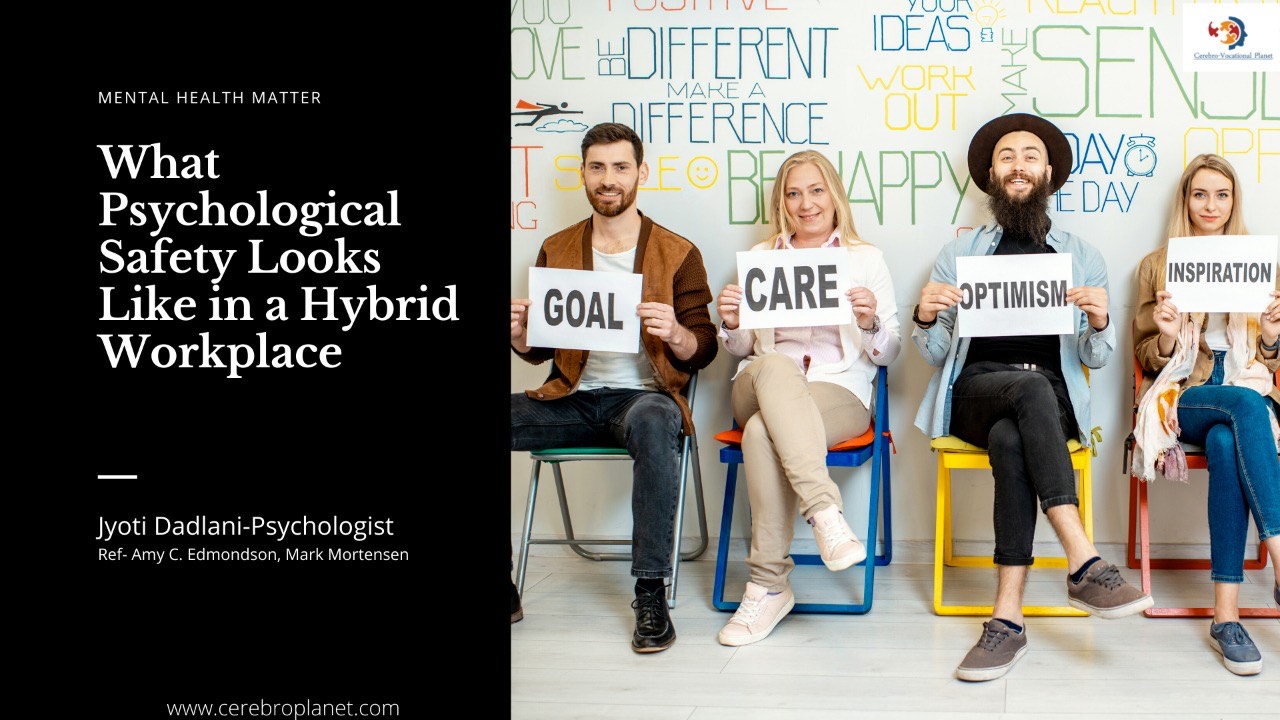“ Please don’t fire me!”
This is what my new employee told me after she made a faux pas.
At first, I was taken aback by her question but I laughed it off to get her back to tranquillity.
I could not come to terms that a minor mistake had brought her on edge of losing her job.
Later on, during a creative meeting, I decided to bring up this topic so as to understand the reason behind her state of mind.
She shared her experience in her previous employment where the employees would be treated badly for their mistakes & would suffer punishments like salary deductions. Their ideas would not be appreciated & they would even have to take the fall for the employer’s blunders.
This is a sheer case of psychological unsafety at the workplace wherein the employees don’t feel safe for interpersonal risk-taking. Humiliation, Blame, Criticism & Bullying create workplaces where employees are filled with fear. This kind of psychologically unsafe environment doesn’t get the best out of people. Workers are too busy watching their backs & frightened of putting a wrong foot to make suggestions & help each other. They dare not share ideas for fear of being shut down.
The belief that one can speak up without the risk of punishment or humiliation — has been well established as a critical driver of high-quality decision making, healthy group dynamics and interpersonal relationships, greater innovation, and more effective execution in organizations.
How New Forms of Work Affect Psychological Safety?
As the boundary between work and life becomes increasingly blurry, managers must make staffing, scheduling, and coordination decisions that take into account employees’ personal circumstances — a categorically different domain.
For one employee, the decision of when to work from home may be driven by a need to spend time with a widowed parent or to help a child struggling at school.
Work-life balance issues are challenging because these topics are more likely to touch on deep-seated aspects of employees’ identity, values, and choices. This makes them both more personal and riskier from legal and ethical standpoints with respect to bias.
We can’t just keep doing what we are doing.
Over the past year, however, many managers have found that previously off-limits topics like child care, health-risk comfort levels, or challenges faced by spouses or other family members are increasingly required for joint (manager and employee) decisions about how to structure and schedule hybrid work.
Re- Separate the two- Neither a realistic nor a sustainable long-term solution.
Keep in mind that hybrid working arrangements present a parallel increase in managerial complexity; managers face the same workflow coordination challenges they’ve managed in the past, now with the added challenge of coordinating among people who can’t be counted on to be present at predictable times.
Strategies for Managers.
The managers should follow the following strategy in order to maintain a Psychologically Safe Work Environment:
- Set the scene:
Have a discussion with your team to help them recognize not only their challenges but yours as well. The objective of this discussion is to share ownership of the problem.
- Lead the way:
Be vulnerable and humble about not having a clear plan and be open about how you’re thinking about managing your own challenges.
- Take baby steps:
Don’t expect your employees to share their most personal and risky challenges right away Start by making small disclosures yourself.
- Share positive examples:
Increased transparency is happening and is helping the team design new arrangements that serve both individual and organizational goals.
- Be a watchdog:
Be open about your intentions to be inclusive and helpful so that people don’t see requests for their presence as a rebuke.
It is important that managers view & discuss these conversations as a work in progress. As with all group dynamics, they’re emergent processes that develop and shift over time. This is the first step; the journey ahead comes without a road map and will have to be navigated iteratively.
And lastly, LEAD- Let’s Empower Advocate & Do.
Managers to keep the following points in mind in order to LEAD:
- Ask, Be Aware & Connect.
- Check out early risk factors, warning signs, & prevalence of chronic stress & mental illness in the workplace.
- Introduce coping techniques.
We can help you create a Psychologically Safe Hybrid Work Environment with our Corporate Mental Wellness Program- SHINE. We offer Mental Health Program, PRE & POST Assessment & One on One Counselling.
Reach out to us at jyoti@cerebroplanet.com to know more about the Program.
Visit us at www.cerebroplanet.com

